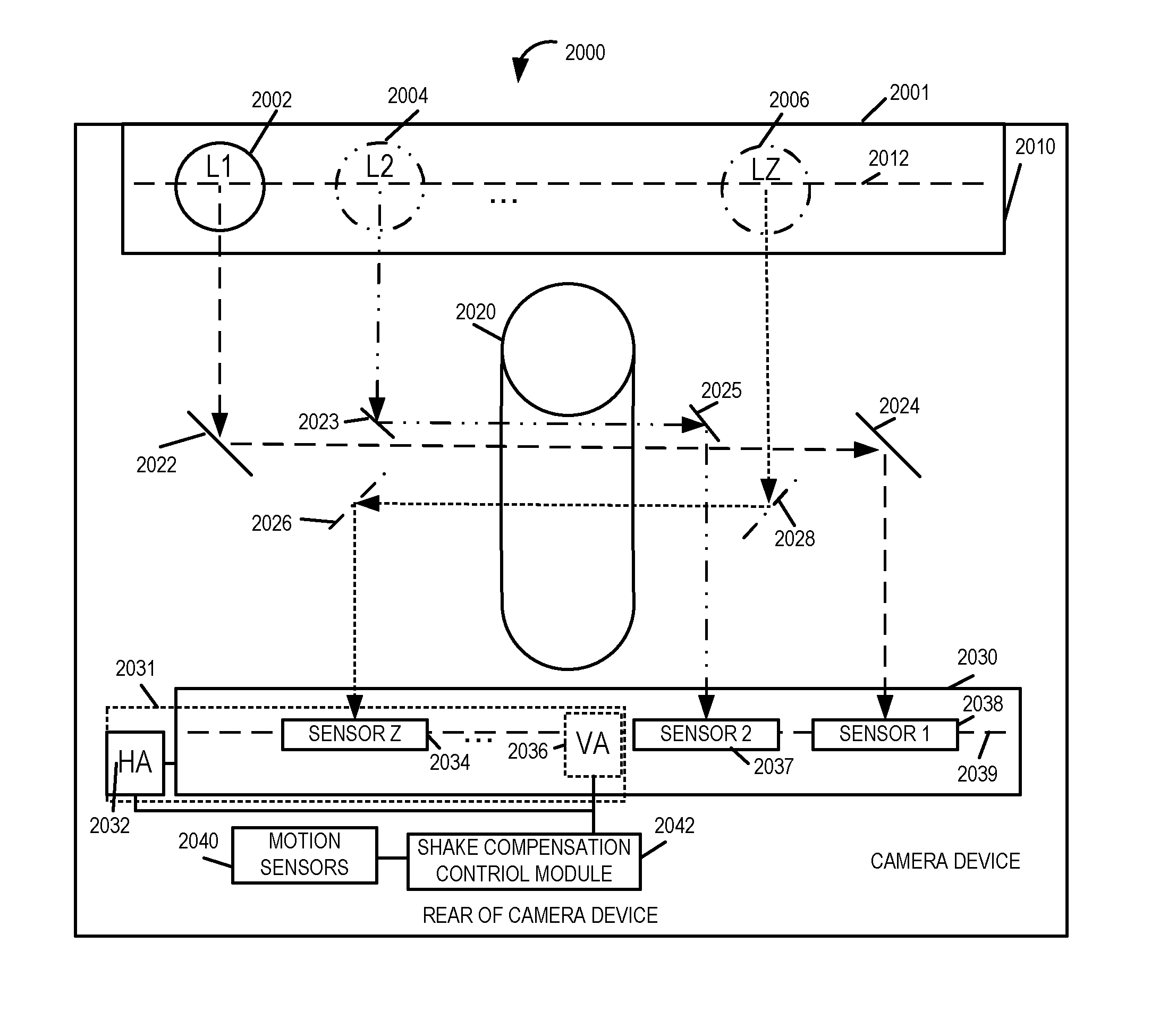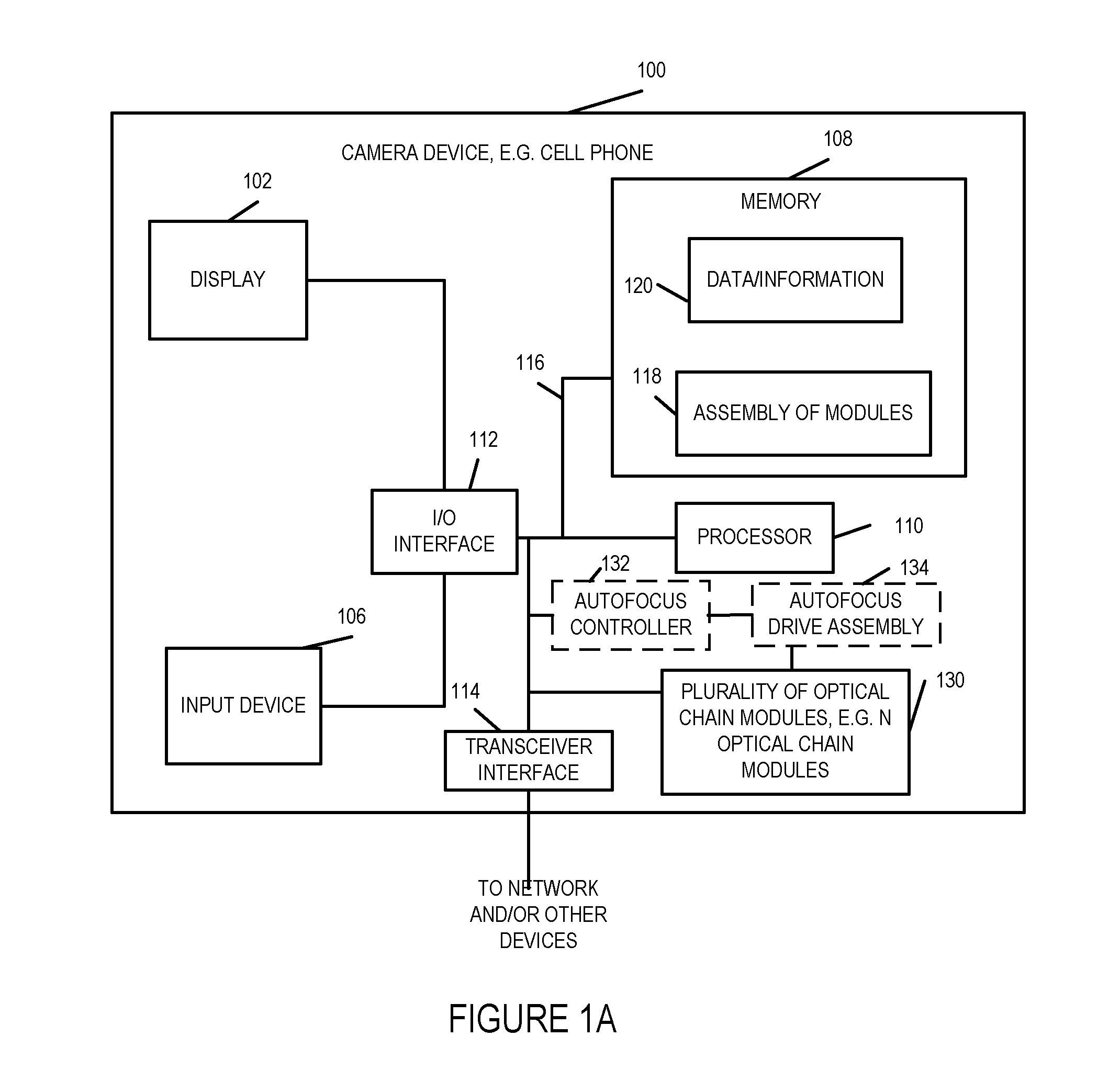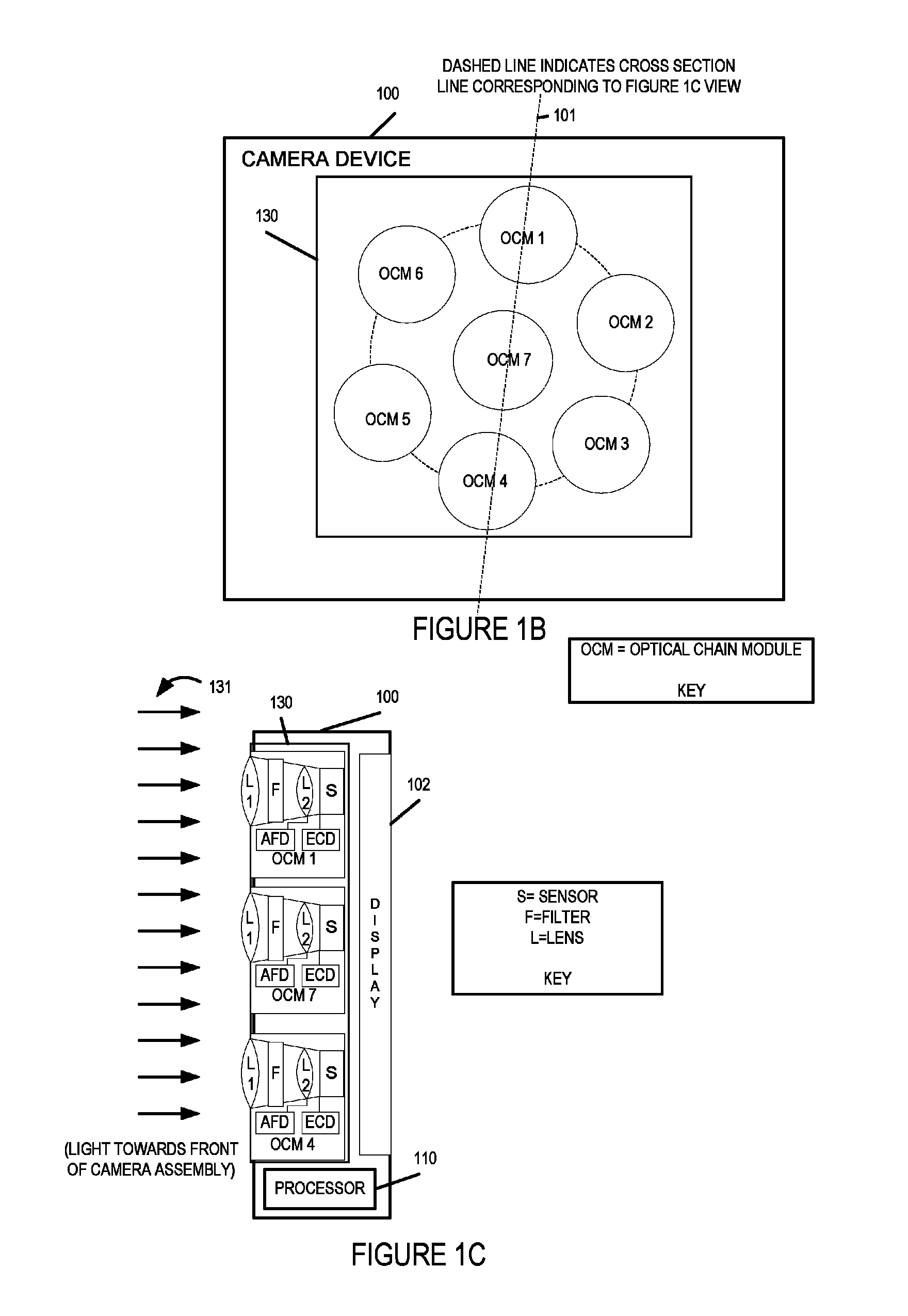Methods and apparatus relating to a camera including multiple optical chains
a technology of optical chains and cameras, applied in the field of cameras including multiple optical chains, can solve the problems of large bulky and often costly lenses, large telephoto lenses, and heavy lenses, and achieve the effect of facilitating a compact camera design
- Summary
- Abstract
- Description
- Claims
- Application Information
AI Technical Summary
Benefits of technology
Problems solved by technology
Method used
Image
Examples
Embodiment Construction
[0056]FIG. 1A illustrates an exemplary apparatus 100, sometimes referred to hereinafter as a camera device, implemented in accordance with one exemplary embodiment of the present invention. The camera device 100, in some embodiments, is a portable device, e.g., a cell phone or tablet including a camera assembly. In other embodiments, it is fixed device such as a wall mounted camera.
[0057]FIG. 1A illustrates the camera device 100 in block diagram form showing the connections between various elements of the apparatus 100. The exemplary camera device 100 includes a display device 102, an input device 106, memory 108, a processor 110, a transceiver interface 114, e.g., a cellular interface, a WIFI interface, or a USB interface, an I / O interface 112, and a bus 116 which are mounted in a housing represented by the rectangular box touched by the line leading to reference number 100. The input device 106 may be, and in some embodiments is, e.g., keypad, touch screen, or similar device that ...
PUM
 Login to View More
Login to View More Abstract
Description
Claims
Application Information
 Login to View More
Login to View More - R&D
- Intellectual Property
- Life Sciences
- Materials
- Tech Scout
- Unparalleled Data Quality
- Higher Quality Content
- 60% Fewer Hallucinations
Browse by: Latest US Patents, China's latest patents, Technical Efficacy Thesaurus, Application Domain, Technology Topic, Popular Technical Reports.
© 2025 PatSnap. All rights reserved.Legal|Privacy policy|Modern Slavery Act Transparency Statement|Sitemap|About US| Contact US: help@patsnap.com



